Cleaning isn’t something most of us were professionally trained in. Whether you’re sprucing up your home, resetting an Airbnb for the next guest, or managing the daily upkeep of a busy office or retail space, chances are you’re making at least a few cleaning mistakes without even realizing it.
And it’s not just about appearances. Small oversights can lead to lingering germs, faster wear-and-tear on surfaces, wasted time, and even health hazards — especially in shared or high-traffic environments.
This isn’t another generic cleaning list. We’re digging into the most common (and costly) cleaning mistakes people make across homes, commercial properties, and hospitality spaces — and giving you smart, actionable ways to fix them.
Let’s dive into 21 cleaning blunders you might be guilty of — and exactly what to do instead.
Common Cleaning Mistakes
1. Using the Wrong Cleaner for the Surface
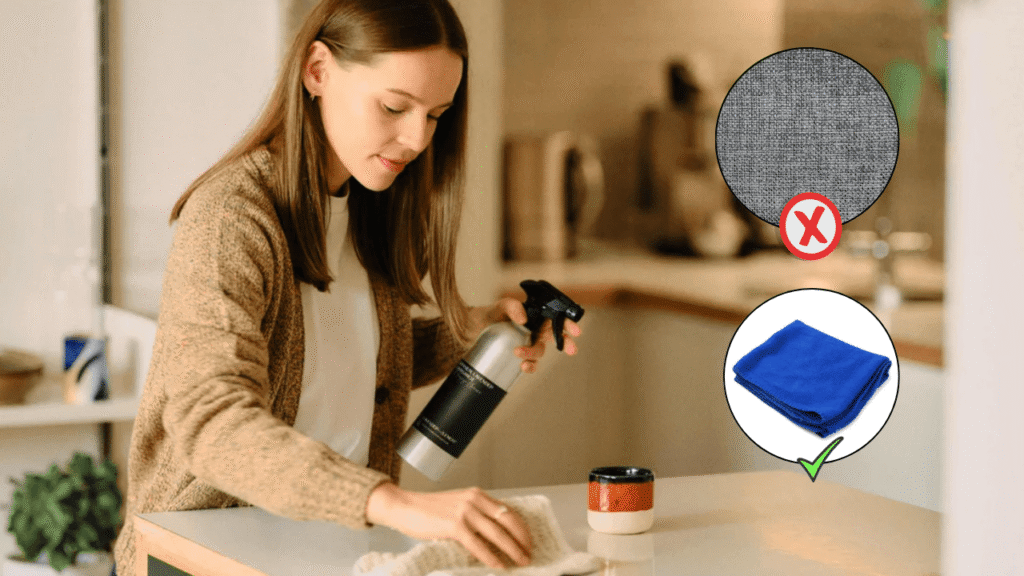
It’s tempting to grab a single “all-purpose” cleaner and use it on every surface — countertops, floors, stainless steel, mirrors. But not all cleaners are safe for all materials.
For example, using vinegar or lemon on natural stone like marble or granite can etch and dull the surface permanently, while using bleach on wood can dry it out and cause discoloration.
Fix it
Take a few seconds to read the label on your cleaning product. Use pH-neutral cleaners for natural stone, oil-based polish for wood, and ammonia-free sprays for glass. When in doubt, test in a small spot first.
2. Spraying Disinfectant and Immediately Wiping It Off

We’re often in a rush — especially during daily cleanups — so we spray a disinfectant and wipe it right off, thinking we’ve killed all germs. But that’s not how disinfectants work.
Most disinfectants need to sit wet on a surface for several minutes (often 5–10) to actually kill bacteria and viruses.
Fix it
Check the product’s instructions for “dwell time” or “contact time.” Spray the surface, let it stay wet for the recommended time, then wipe it off. It makes a massive difference in germ removal.
3. Using the Same Cloth for the Toilet and the Sink (or Worse — the Kitchen)
You might think rinsing your cloth with water is enough. But when you use the same cloth or sponge across multiple surfaces — especially across high-germ areas like the toilet and food-prep surfaces — you’re spreading bacteria around instead of removing it.
Fix it
Designate specific cloths or microfiber towels for each room. A simple color-coded system — like red for the bathroom, blue for the kitchen, yellow for dusting — can prevent cross-contamination.
4. Over-Saturating Your Mop or Rag

Using a dripping-wet mop on your hardwood or laminate floor might feel like it’s doing a thorough job, but in reality, it can cause water to seep into the seams, leading to warping, mold, and long-term floor damage.
Fix it
A slightly damp mop is enough to lift dirt and give floors a shine without soaking them. And always wring out your cloths or rags well before wiping wood furniture or baseboards.
5. Skipping Cabinet and Drawer Fronts

Cabinet doors and drawer fronts — especially in kitchens and bathrooms — are magnets for grease, steam, fingerprints, and dust. Yet, we often overlook them during weekly cleanups.
Fix it
Make it a habit to wipe cabinet surfaces at least once every two weeks with a damp microfiber cloth. In the kitchen, use a degreaser or a bit of dish soap diluted in warm water to cut through the buildup.
6. Cleaning Floors First Instead of Last
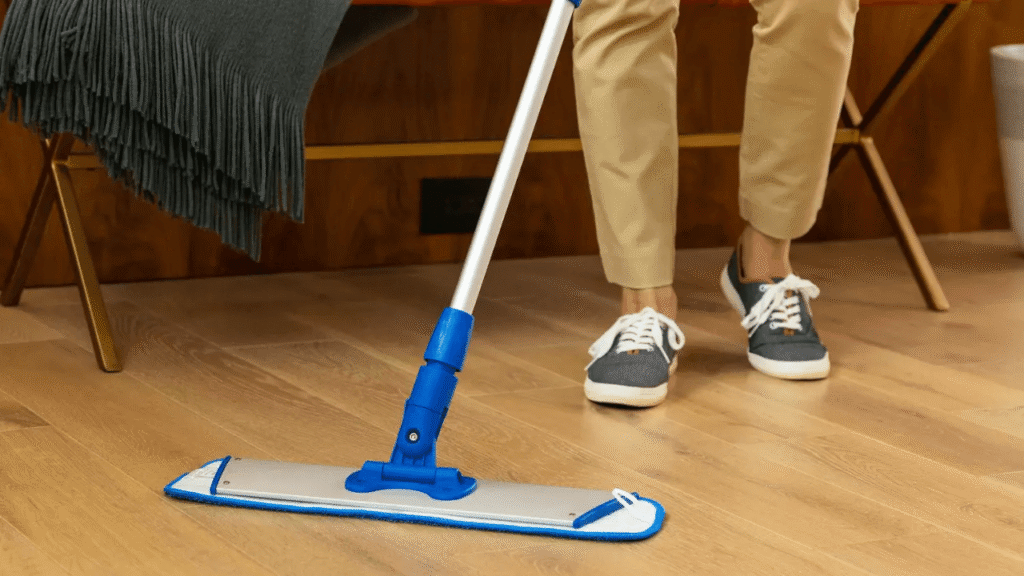
It might seem efficient to start with vacuuming or mopping, but doing the floors first means you’ll just have to clean them again after dust or crumbs fall from counters, shelves, or ceiling fans.
Fix it
Adopt the golden rule of cleaning: top to bottom, left to right. Always start with ceiling fans or high shelves, work your way down to counters, and save floors for last.
7. Using Vinegar or Lemon on Natural Stone

Vinegar and lemon are beloved DIY cleaning ingredients — and they work great for many surfaces. But on natural stone (like granite, marble, or travertine), their high acidity can etch the surface and cause irreversible damage.
Fix it
Use a stone-safe, pH-neutral cleaner or simply warm water with a small amount of gentle dish soap. Keep vinegar and lemon for glass, tiles, or inside microwaves.
8. Neglecting to Clean Cleaning Tools
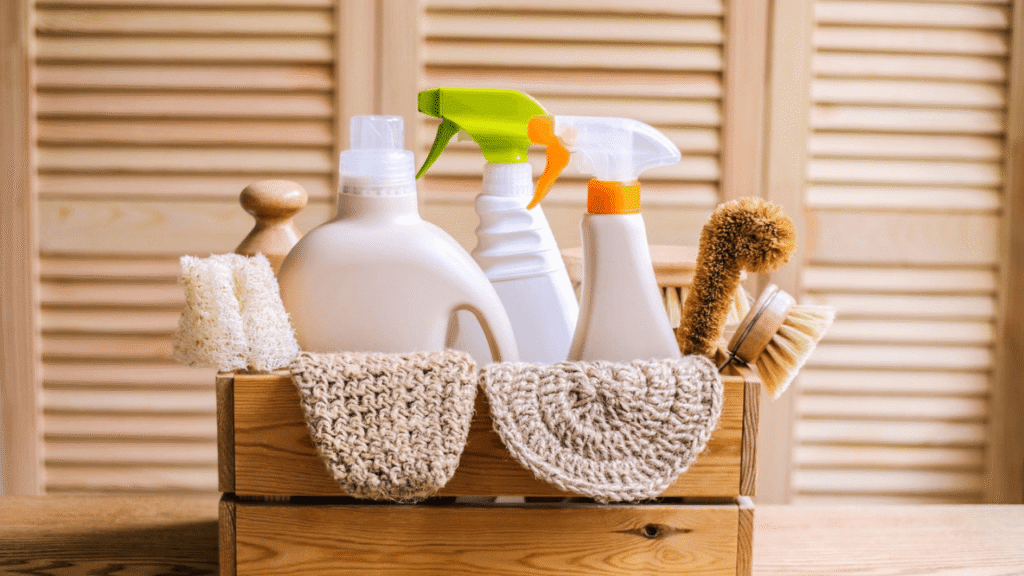
You wouldn’t wash your face with a dirty cloth, right? So why clean your home with dirty tools?
Sponges, rags, vacuum filters, and mop heads harbor bacteria, mold, and grime when not cleaned regularly. That means you could be spreading more germs than you’re removing.
Fix it
Wash microfiber cloths and mop heads weekly in hot water. Disinfect sponges in the microwave or dishwasher daily. Empty your vacuum’s dustbin or replace bags as soon as they’re two-thirds full.
9. Forgetting to Clean the Vacuum Cleaner Itself

Speaking of vacuums — have you ever noticed a bad smell after vacuuming? That’s often because the filter is clogged or the brush roller is packed with hair and debris.
Fix it
Check the manufacturer’s guide and clean your vacuum monthly. That means washing or replacing filters, untangling the brush roller, and wiping the dustbin or bag compartment.
10. Dusting with a Dry Cloth
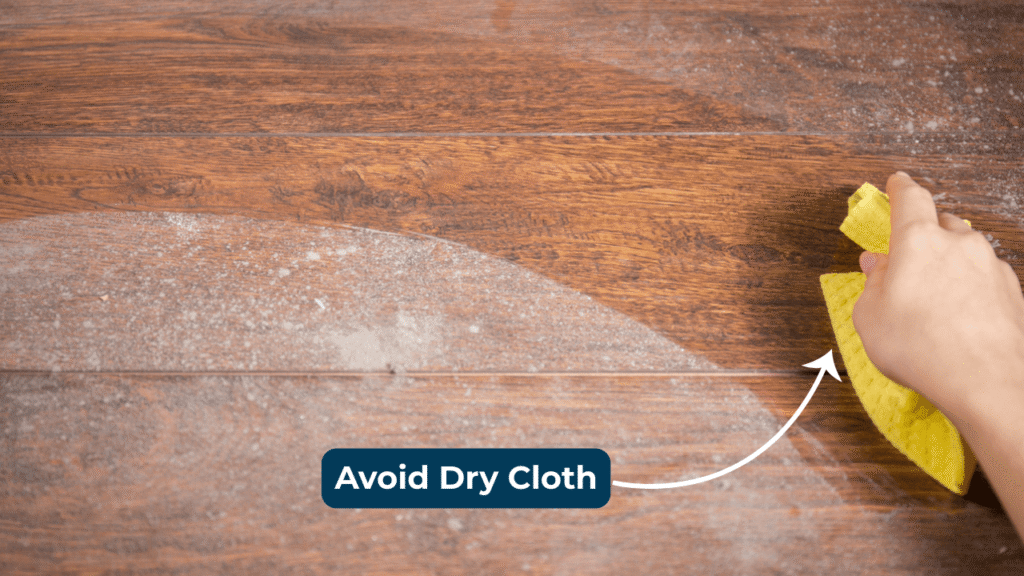
Dry dusting doesn’t actually “trap” dust — it just pushes it into the air, only for it to resettle on the surface again minutes later.
Fix it
Use a damp microfiber cloth or a static-charged duster to trap dust instead of just moving it around. For electronics or delicate items, use a can of compressed air or a special electronics-safe wipe.
11. Not Washing Pillows, Cushions, or Soft Furniture

You probably wash your sheets regularly, but what about your pillows, mattress topper, or couch cushions?
These items absorb sweat, dust mites, dead skin cells, and allergens, and they need regular deep cleaning.
Fix it
Wash bed pillows every 2–3 months (yes, really), clean cushion covers monthly, and vacuum soft furniture weekly. If possible, put pillows in the dryer on high heat to kill germs.
12. Only Cleaning What’s Visible
It’s easy to focus on what you can see — but the hidden areas behind appliances, under beds, or inside drawers are often the dirtiest.
Fix it
Create a deep-cleaning schedule for once a month or quarter. Move furniture, clean behind the fridge, pull out drawers. It’s extra work — but worth it for your health and home’s longevity.
13. Skipping the Baseboards and Vents

Dusty baseboards and air vents can make a freshly cleaned room still look dirty. Worse, dirty vents circulate dust and allergens throughout your home.
Fix it
Vacuum or wipe baseboards with a damp cloth monthly. Remove vent covers and wash them with soapy water every 2–3 months.
14. Not Disinfecting Light Switches, Remotes, and Handles
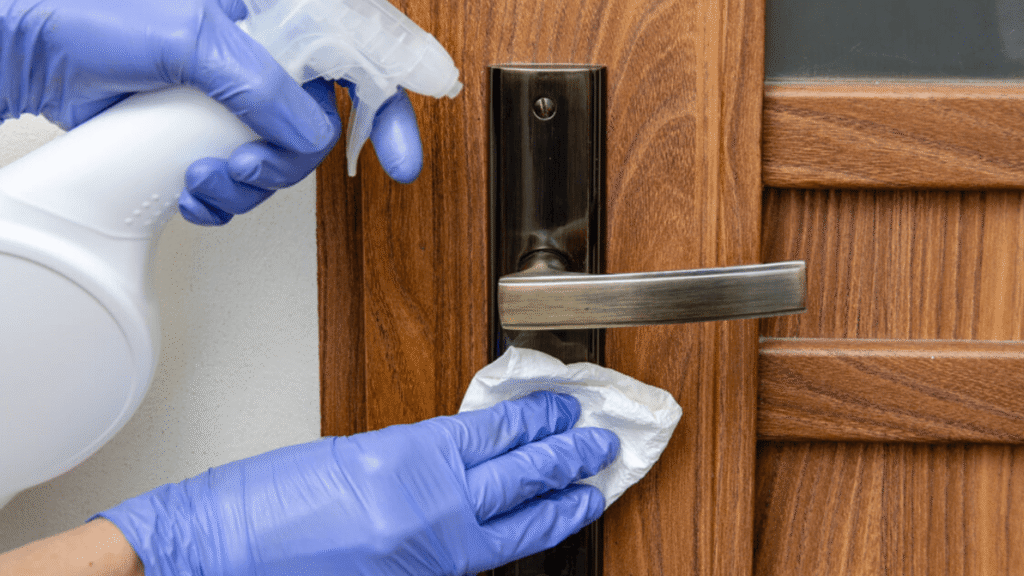
These are some of the most touched — and least cleaned — surfaces in any home or office. Germs love high-touch points.
Fix it
Use disinfectant wipes or sprays weekly on doorknobs, remotes, keyboards, drawer handles, and light switches. It only takes a few seconds but significantly reduces bacteria buildup.
15. Letting Dishes “Soak” for Too Long
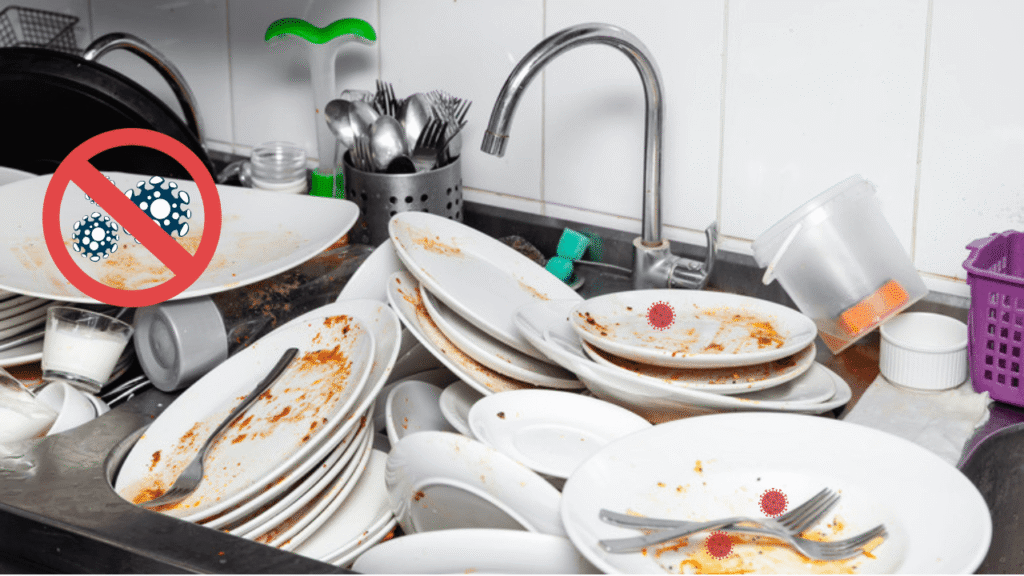
Yes, soaking pans helps with stuck-on food. But leaving dishes in the sink overnight lets bacteria multiply — and creates unpleasant smells.
Fix it
Set a timer and soak dishes for no more than 20–30 minutes. Use baking soda and hot water to help loosen grime faster.
16. Not Reading Product Labels
It’s easy to assume all cleaners are safe for every surface, but that’s a quick way to damage your countertops, furniture, or flooring.
Many surfaces — like marble, hardwood, or stainless steel — need specific types of cleaners to avoid streaks, staining, or long-term wear.
Fix it
Take a moment to read the product label before using any new cleaner. Look for surfaces it’s safe on, whether it needs rinsing, and if it contains harsh chemicals like bleach or ammonia.
17. Not Testing Cleaners in a Small Area First
Excited to use that new all-purpose cleaner? Jumping in without testing can backfire.
Certain materials react badly to chemicals, leaving behind discoloration, warping, or permanent damage.
Fix it
Before using any cleaner on a large surface, apply it to a small, hidden area. Wait a few minutes to see how it reacts. This one small step can save you from expensive repairs.
18. Using One Vacuum Setting for All Surfaces
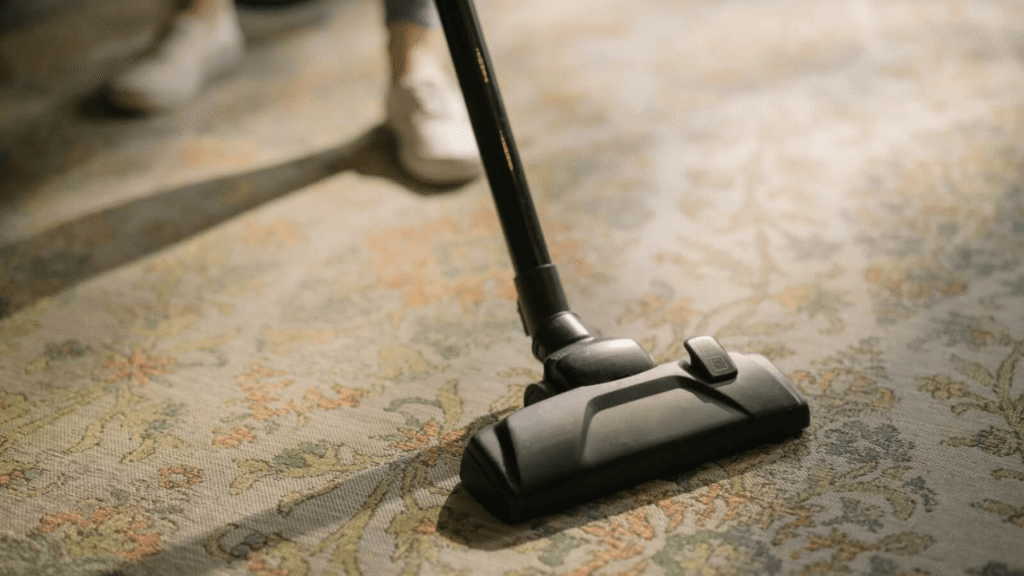
Vacuuming everything with the same setting might seem efficient — but it’s not effective.
Carpets, hardwood floors, and tiles all need different suction levels and brush modes. The wrong setting can damage floors or miss dirt altogether.
Fix it
Check your vacuum for adjustable modes. Use a soft roller or suction-only setting for hardwood, and higher suction with a brush roll for carpets or rugs.
19. Believing Every Social Media Cleaning Hack
That viral cleaning video may look impressive, but it’s not always safe — or even real.
Some “hacks” suggest mixing vinegar with bleach or other unsafe combos that produce toxic fumes or damage surfaces.
Fix it
Always fact-check cleaning tips before trying them. Stick to trusted sources or brands, and avoid mixing chemicals unless specifically directed by a professional product.
20. Ignoring Safety Gear (Gloves, Masks)
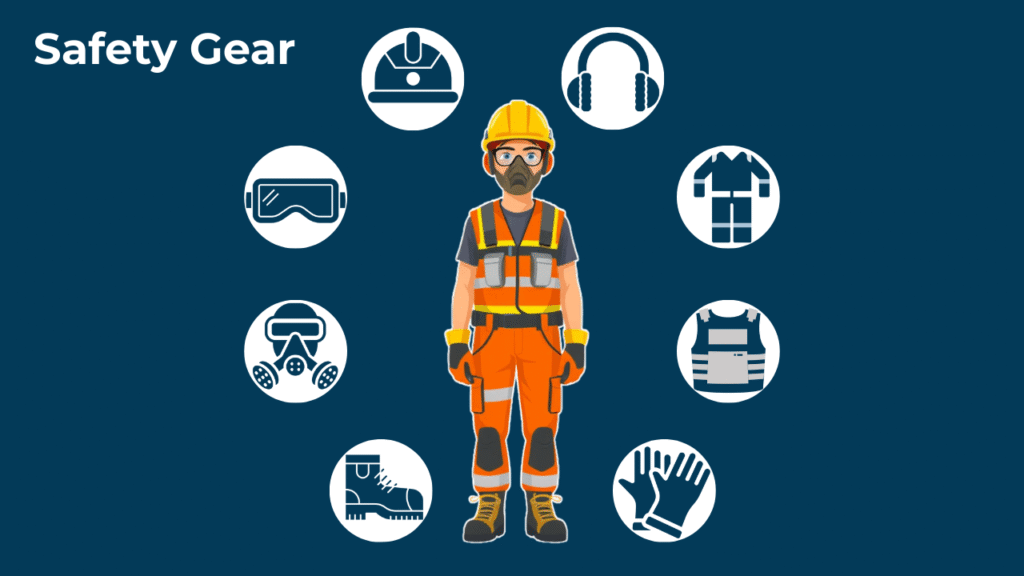
Many cleaning products contain harsh chemicals that can irritate your skin, eyes, or lungs — especially during deep cleaning sessions.
Not wearing protection exposes you to unnecessary risks.
Fix it
Always wear gloves when handling cleaning agents. For strong fumes (like bleach), open windows, wear a mask, or use a fan. Safety first — clean doesn’t have to mean risky.
21. Cleaning in the Wrong Lighting
Dim or yellow lighting hides dirt, stains, and streaks — making you miss spots even after cleaning.
You might think the room is clean, only to discover smudges or dust later in natural light.
Fix it
Schedule your deep cleaning during daylight hours or use bright, white LED lighting. You’ll be surprised how much more you catch with proper lighting.
Hidden dirt and buildup are exactly why a regular tidy-up isn’t enough. To see how deep cleaning compares to a routine clean — and why both matter — check out our guide on Deep Cleaning vs Regular Cleaning.
Ready for a Deeper, Safer Clean?
If you’re looking for professional-grade results without the guesswork, our expert cleaners are here to help. We offer:
- Tailored cleaning plans for homes, Airbnbs, and businesses
- Eco-friendly and safe products
- Flexible scheduling (including same-day service)
- Affordable rates with no hidden costs

Final Thoughts: Clean Smarter, Not Just Harder
Cleaning isn’t just a chore — it’s an investment in your health, your comfort, and the longevity of your space. Whether it’s a cozy apartment, a guest-ready Airbnb, or a bustling commercial property, avoiding these common cleaning mistakes can help you save time, money, and frustration in the long run.
From understanding product labels to ditching viral cleaning myths, every small fix adds up to a noticeably cleaner, fresher, and safer environment.
So the next time you grab your mop, vacuum, or spray bottle — pause, check this list, and clean with intention.


